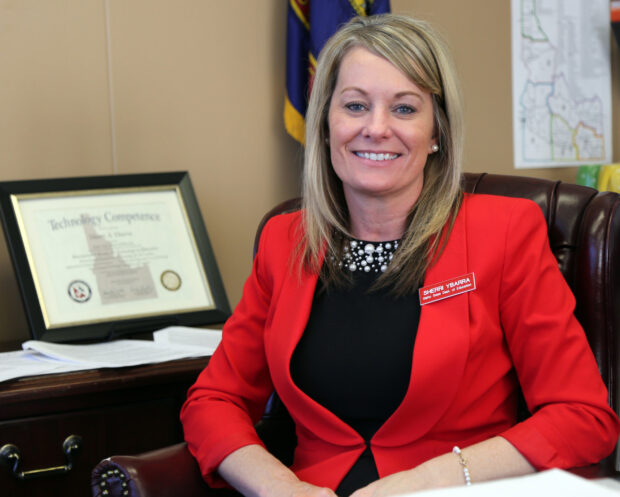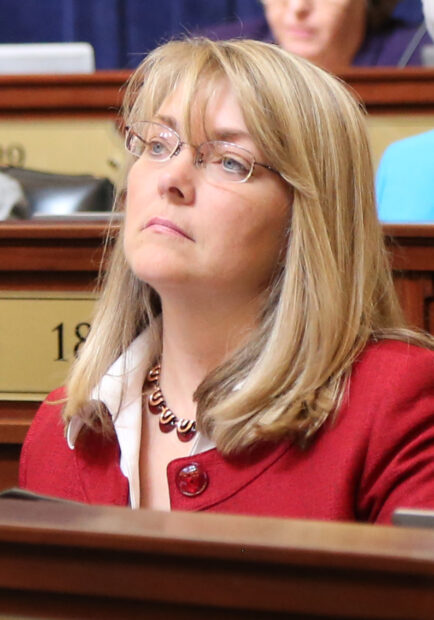The Legislature’s budget committee approved new raises for teachers Monday, as part of a plan to increase public school funding by 6.3 percent in 2017-18.
The Joint Finance-Appropriations Committee approved a $100.6 million increase. All told, budget writers called for spending almost $1.7 billion in general fund money on public schools, representing the state’s largest expense.

As expected, budget-writers approved $61.9 million for a third consecutive year of teacher raises under the Legislature’s salary law, the so-called career ladder.
Superintendent of Public Instruction Sherri Ybarra applauded the spending plan.
“They were very supportive, and it’s a great day again for education in Idaho,” she said. “(Raises for teachers) were one of the items all the stakeholders unanimously across the state supported, and it’s also supportive of our goal to attract and retain great teachers and leaders in Idaho.”
Lawmakers approved most components of the budget unanimously, but they wrestled over how to address rising health care costs. After a spirited debate, lawmakers shot down a $15.2 million plan to create a line item dedicated to health care costs. Instead, they increased discretionary spending for school districts by $15.9 million, or 4.1 percent above current levels.
That plan would bring per-classroom spending levels up from $25,696 to $26,748.
Under the 2017-18 plan, $15,506 of the $26,748 is for districts to truly use at their discretion. The remaining $11,242 is designed to offset employer costs for health, vision and dental care. If districts spend less than $11,242 on health care, they may use the remaining balance at their discretion, said Rep. Wendy Horman, R-Idaho Falls, one of the budget’s main architects.

If health care costs exceed $11,242 per classroom, districts can draw from their $15,506 of discretionary money to cover the difference.
Horman used a weighted average of districts’ health care costs to come up with the $11,242 figure.
“We divided discretionary dollars up into two separate buckets this time that will help the state get a handle on what we’re actually spending on health care costs,” she said. “Given there was such strong opposition to new line items and, in fact, a call to consolidate line items, we decided to find a hybrid way to both identify costs for this year and identify projections as we move forward.”
Other budget highlights include:
- $6.9 million for 3 percent raises to administrators and classified staff not subject to the career ladder.
- $5 million to increase classroom technology.
- $5 million to increase IT staffing.
- $4.25 million to increase professional development training for teachers. Budget-writers said professional development should be measurable, and incorporated into performance evaluations and be districts’ continuous improvement plans.
- $2 million for college and career advising.
The 2017-18 budget comes in slightly lower expensive than the budget requests from Gov. Butch Otter and Ybarra.
Otter opened the 2017 legislative session by calling for a 6.4 percent increase. Ybarra had sought a 6.7 percent increase.
Lawmakers have yet to act on several notable funding requests — although JFAC still must set the State Department of Education and the State Board of Education budgets separately.
So far, JFAC has not funded one of Ybarra’s top priorities — a rural schools support center that she has been pushing since 2016. Ybarra originally included that request in the public school budget, but in January she told lawmakers to find the $300,000 within the SDE budget, which has yet to be set.
Since at least early January, Ybarra’s chief policy adviser has been shopping around a draft bill to set up rural school center, but no bill has materialized yet.
Lawmakers also have yet to decide on whether or how fund increased training for administrators regarding teacher evaluations. Otter called for lawmakers to spend $2.5 million with the State Board for evaluations training. Meanwhile, Ybarra sought $300,000 within the public school budget.
The State Board budget is scheduled to be set March 10, while the SDE budget comes up March 7.
The public school budget will likely again represent about 48 percent of all general fund spending, although the exact percentage won’t become official until all state budgets have been set. That will occur over the next two weeks.
